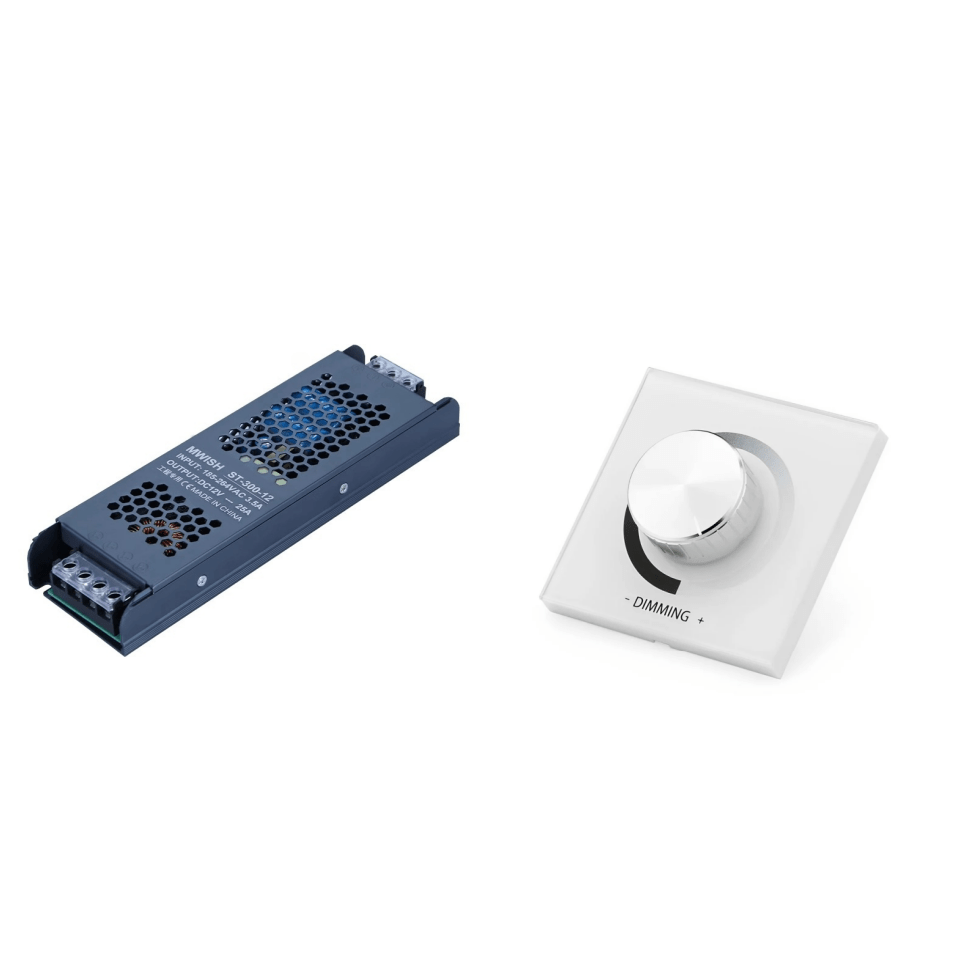LED Drivers and Dimmers Explained
Both drivers and dimmers are indispensable components of contemporary lighting systems, particularly LED lighting systems. They guarantee the operation, security, and lifespan of your lighting. Understanding their functions will aid you in deciding which goods to get, eliminating flicker, and building a lighting environment that is both comfortable and efficient.
Drivers and Dimmers Made Simple
Take a car, which requires an engine to operate — in the same way, an LED lamp needs a driver to provide stable power and normal operation.
As with a car accelerator, the driver from high-voltage AC (the unpredictable, wave-like electricity coming from your home outlet) transferring into low-voltage DC that runs steadily (and that's just what LED lights want).
But a dimmer is like a car's gas pedal — it controls the brightness of the light.
It alters the current to change the brightness of an LED, allowing you to make reading machine light but still have sufficient level of brightness; or you could downplay only task and mood lights on dark rainy nights and so on.
What Is an LED Driver?
The LED driver is the "brain" of the lighting system. It ensures that an LED gets correct voltage supplies and currents. This protects it from fluctuations and extends its life.
The following are the key functions of a driver:
-
Voltage conversion: 110V/220V AC to 12V/24V DC
-
Constant current: Provides uniform, continuous current flow to avoid flickering and protect the LED
-
Protection: Features overvoltage, short circuit, overheat protection
-
Compatibility: Adapts to an assortment of LED fixtures of various types and wattages

Why LED Lights Must Use a Driver
LEDs are extremely sensitive to power. Hooking them up directly to AC can burn them right out. A driver acts as a buffer — smoothing out the power and making your LEDs run safely and smoothly.
What Are Dimmers and How Do They Work?
The dimmer serves to control the LED light level as comfortable as you wish, thereby making it comfortable.
Common Types of Dimmers
-
TRIAC (or phase-cut) dimmers that are found in most traditional wall plate dimmers: some of these will be LED compatible
-
PWM dimmers employ pulse-width modulation to achieve smooth lighting control for LEDs, CFLs and low voltage loads
-
0-10V dimmers are used primarily in commercial and industrial applications
-
Smart dimmers — these may be controlled by an app, voice assistant or another remote device
Benefits of Using Dimmers
-
Adjust brightness according to the task at hand
-
Reduce energy consumption at lower brightness levels
-
Extend LED fixture life span
-
Create atmosphere and reduced eye strain
Driver vs. Transformer: What’s the Difference?
Many people confuse LED drivers with transformers. They're actually different.
Key Differences
| Attribute | Transformer | LED Driver |
|---|---|---|
| Function | Converts voltage from AC | One with the same rectified acquires. Parameters and amplitudes of switches among loads will be regulated. |
| Output type | AC | DC or constant current |
| Voltage stability | Unstable | Regulated and consistent |
| Rectification | No | Yes |
| Typical use | 9-volt Halogen lamps, low voltage devices | Specifically for LED lighting |
Transformer Page
Summary
A transformer is like a basic pump that adjusts flow, while a driver is a computerized valve and pump at the same time. Drivers not only transform but also contain having same amplitude, frequency, polarity and interval for all LED modules — a consistent flow of energy gives first-rate power output lasting longer without any shocks to its user or environment.
Common Issues and Buying Tips
Problem: Flickering After Installing a Dimmer?
-
Reasons: The driver is not compatible with the dimmer.
-
Solution: Use dimmable LED drivers and dimmers that have been given a mark indicating compatibility with LEDs.
Problem: Driver Doesn’t Match LED Power?
-
May cause flicker, shorten lifespan, or even cause LED to blow out.
-
Tip: Always check before purchase: voltage, current, output type.
Pre-purchase tips:
-
View product specifications: Does it clearly state that the LED can be dimmed? What kind of driver does it need in order to function properly?
-
When used indoors or outdoors, match dimmers for LED lighting with compatible devices. Always use weatherproof drivers in places that are often wet or soaked. Indoor/outdoor drivers should be IP65 rated or above.
-
Weatherproof drivers should be used for outdoor and damp areas (look for an IP65 or above).
Final Thoughts: Choose the Right Driver and Dimmer for Better Lighting
The driver will make the LED light safe and efficient.
The dimmer provides flexible control over brightness and atmosphere.
By putting the right team together, the LEDs will be long-lasting, flicker-free and energy-saving.








